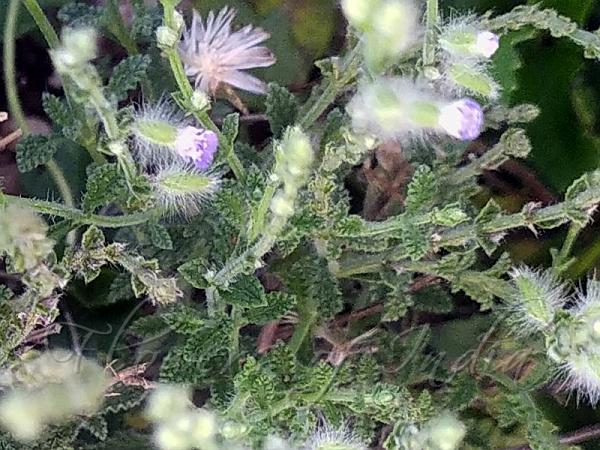|
| Santolina Sage |
|

|

| File size | 207949 |
| Original date | 7/5/21 6:29 AM |
| Resolution | 4000 x 2248 |
| Flash | Flash did not fire, auto |
| Focal length | 4.74mm |
| Exposure time | 1/120s |
| Aperture | 1.79 |
| Focus Distance | |
| Metering Mode | Center weighted average |
| Camera make | Xiaomi |
| Camera model | Redmi Note 8 |
| Sensor type | Undefined |
|
|
|
|
Photo: |
Botanical name: Salvia santolinifolia Family: Lamiaceae (Mint family)
Synonyms: Pleudia santolinifolia
Synonyms: Pleudia santolinifolia
Santolina Sage is a woody, much branched herb. It is
so named because of the resemblance of its leaves to Santolina plant
leaves. Inflorescence usually consists of several, 1-2-flowered distant
or approximating verticillasters. Flowers are mauve, pink to lilac
often with darker markings, 5-6 mm; upper lip straight much shorter
than lower. Lower theca are fertile; staminodes prominent. Sepal-cup is
tubular-bell-shaped, 3-4 mm in flower and about 5 mm in fruit, with a
dense indumentum of hairs, upper lip of connivent tapering-spinulose
teeth. Flower-stalks in flower 1.5 mm elongating to 2.5 mm and recurved
in fruit. Bracts and bracteoles are present. Stems often have a gnarled
woody base, are leafy, erect, 10-25 cm tall, hairy or glandular. Leaves
are borne erect to erect-spreading linear in outline with a way-curled
margin and apparently or indeed pinnately cut, 5-13 x 1.5-3.5 mm,
whitish grey below with glandular and eglandular hairs and stalkless
oil globules, stalked. Santolina Sage is found in Iran to NW India.
Flowering: February-May (and later).
Medicinal uses: Santolina Sage has
traditionally used for treatment of inflammation, hypercholesterolemia,
hemorrhoids and diarrhea.
Santolina Sage has
traditionally used for treatment of inflammation, hypercholesterolemia,
hemorrhoids and diarrhea.
Medicinal uses:
 Santolina Sage has
traditionally used for treatment of inflammation, hypercholesterolemia,
hemorrhoids and diarrhea.
Santolina Sage has
traditionally used for treatment of inflammation, hypercholesterolemia,
hemorrhoids and diarrhea. | Identification credit: Rohit Patel, P.S. Nagar | Photographed in Savarkundla, Gujarat. |
• Is this flower misidentified? If yes,